
NGC 7038 is an intermediate spiral galaxy located about 210 million light-years away in the constellation of Indus. Astronomer John Herschel discovered NGC 7038 on September 30, 1834.
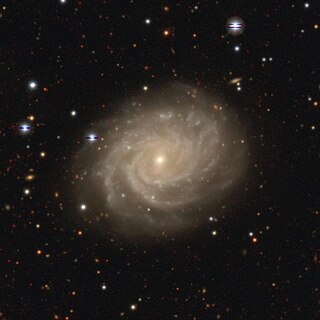
NGC 3336 is a barred spiral galaxy located about 190 million light-years away in the constellation Hydra. It was discovered by astronomer John Herschel on March 24, 1835. NGC 3336 is a member of the Hydra Cluster.
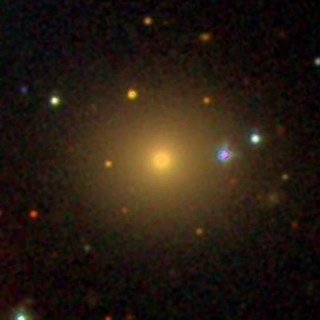
NGC 1259 is a lenticular galaxy located about 243 million light-years away in the constellation Perseus. The galaxy was discovered by astronomer Guillaume Bigourdan on October 21, 1884 and is a member of the Perseus Cluster.

NGC 1268 is a spiral galaxy located about 140 million light-years away in the constellation Perseus. It was discovered by astronomer Heinrich d'Arrest on February 14, 1863. NGC 1268 is a member of the Perseus Cluster and appears to show signs of distortion in the form of bridges. These features may be the result of a strong interaction with NGC 1267.

NGC 1282 is an elliptical galaxy located about 230 million light-years away in the constellation Perseus. It was discovered by astronomer Guillaume Bigourdan on October 23, 1884. NGC 1282 is a member of the Perseus Cluster.

NGC 694 is a spiral galaxy approximately 136 million light-years away from Earth in the constellation of Aries. It was discovered by German astronomer Heinrich Louis d'Arrest on December 2, 1861 with the 11-inch refractor at Copenhagen.
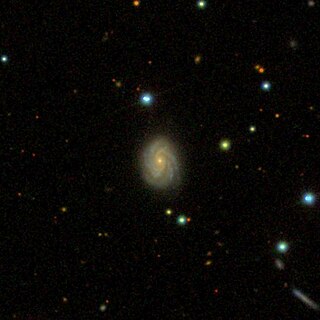
NGC 819 is a spiral galaxy approximately 302 million light-years away from Earth in the constellation of Triangulum. It forms a visual pair with the galaxy NGC 816 5.7' WNW.

NGC 4316 is an edge-on spiral galaxy located about 70 million light-years away in the constellation Virgo. It was discovered by astronomer Wilhelm Tempel on March 17, 1882. NGC 4316 is a member of the Virgo Cluster and is classified as LINER and as a Seyfert galaxy.
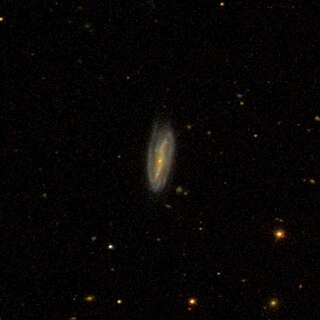
IC 3505 is a barred spiral galaxy located 640 million light-years away from the Solar System in the Coma Berenices constellation. With an apparent size of 0.95 by 0.35 arcmin, IC 3505 has an estimated diameter of 170,000 light-years, making it slightly larger compared to the Milky Way. It is categorized as a LINER galaxy with an active galactic nucleus emitting weak emission-lines.

NGC 6261 is a lenticular galaxy in the constellation of Hercules. It is located 470 million light-years away from the Solar System and has an approximate diameter of 200,000 light-years.

IC 4040 is a type SABc spiral galaxy with a bar in Coma Berenices. It is located 353 million light-years away from the Solar System and has an estimated diameter of 105,000 light-years making it slightly larger than the Milky Way. IC 4040 was discovered on April 12, 1891, by Guillaume Bigourdan and is a member of the Coma Cluster.

NGC 3746 is a large barred spiral galaxy with a ring structure located in the Leo constellation. It is located 449 million light-years from the Solar System and has an approximate diameter of 165,000 light-years. NGC 3746 was discovered by Ralph Copeland on 9 February 1874 with subsequent observations made by Hermann Kobold, Lawrence Parsons and John Louis Emil Dreyer.
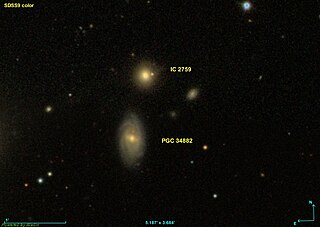
IC 2759 is a small type E elliptical galaxy located in the constellation of Leo. It is located 350 million light-years away from the Solar System and was discovered on April 24, 1897, by Guillaume Bigourdan. Sometimes IC 2759 is confused with the spiral galaxy, PGC 34882 which is located south of the galaxy.

IC 5145 is a type Sab spiral galaxy located in the constellation Pegasus. It is located 356 million light-years from the Solar System and was discovered by Edward Emerson Barnard, although the year he discovered it is unknown.
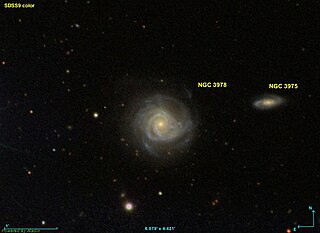
NGC 3978 is a large intermediate spiral galaxy with a bar located in the constellation of Ursa Major. It is located 460 million light-years away from the Solar System and was discovered by William Herschel on March 19, 1790, but also observed by John Herschel on April 14, 1831.
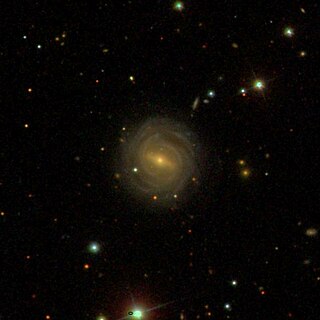
NGC 7222 is a large barred spiral galaxy with a ring structure, located in the constellation Aquarius. It is located 570 million light-years away from the Solar System and was discovered by German astronomer, Albert Marth on August 11, 1864.

IC 2498 known as PGC 27668, is a type Sb barred spiral galaxy located in constellation Leo. It is located 469 million light-years away from the Solar System and was discovered by Stephane Javelle on April 30, 1896.

UGC 9684 is a barred spiral galaxy with a ring structure in the Boötes constellation. It is located 250 million light-years from the Solar System and has an approximate diameter of 90,000 light-years.
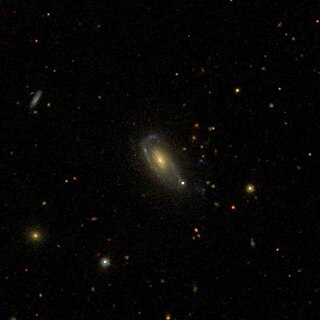
IC 1050 is a type Sbc spiral galaxy located in constellation Boötes. It is located 491 million light-years from the Solar System and has an approximate diameter of 130,000 light-years. IC 1050 was discovered by Stephane Javelle on June 3, 1892.

IC 4588 is a type E elliptical galaxy located in the constellation Serpens. It is located 729 million light-years from the Solar System and has a dimension of 0.30 x 0.3 arcmin meaning its diameter is 64,000 light-years across. IC 4588 was discovered by Stephane Javelle on July 15, 1903.




















